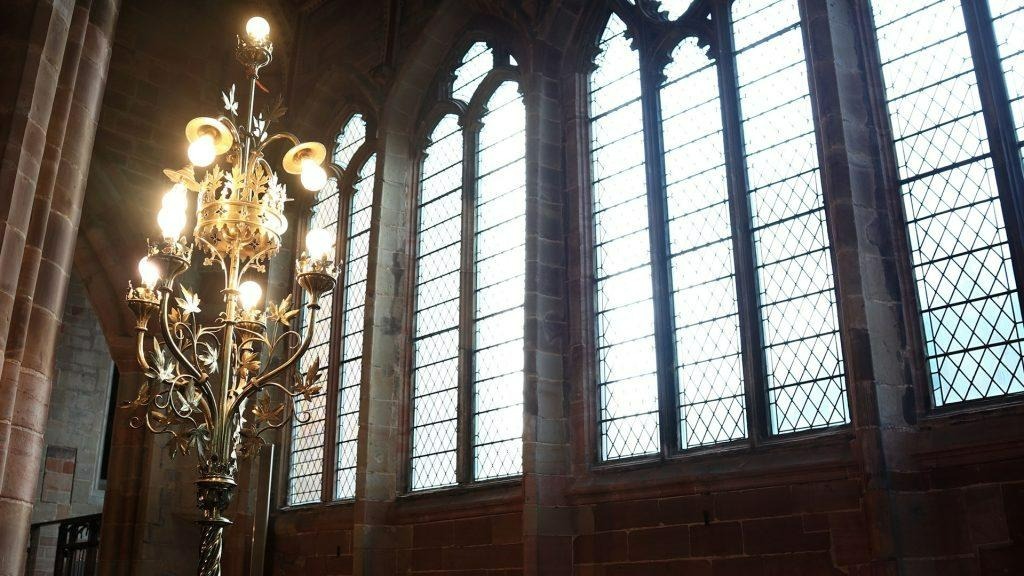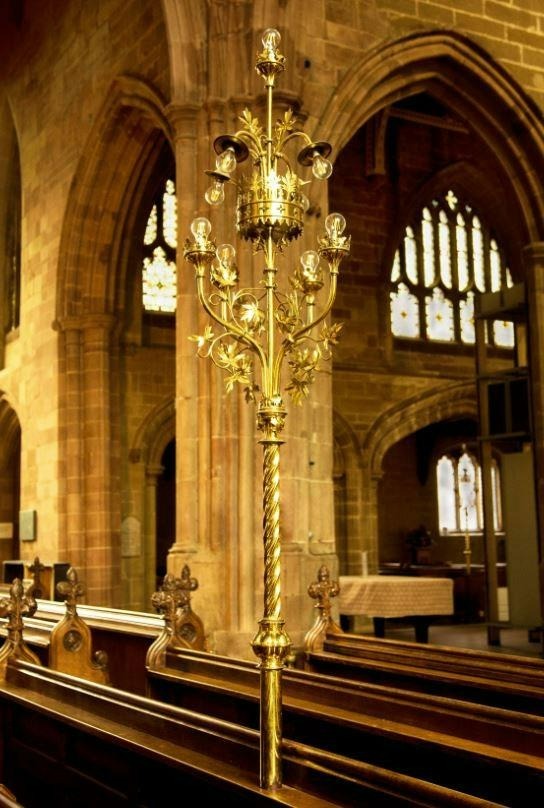The Skidmore Light Fittings
Francis Alfred Skidmore was born in Birmingham, the son of Francis Skidmore, a jeweller.
The Skidmore family moved to Coventry around 1822, possibly because Coventry was an important

watchmaking centre. Skidmore learned metalworking from his father and completed a seven-year apprenticeship with him. In 1845 father and son registered as silversmiths under the name F.Skidmore and son. Their early work as silversmiths consisted primarily of church plate. The earliest known examples of Skidmore’s work include three silver chalices made for St John the Baptist’s Church, Coventry (1845), St Giles, Exhall (1845 and St Alkmund’s, Derbyshire (1846).
The 1850s were an important period in the development and expansion of Skidmore’s career as a

metalworker and craftsman. At the Great Exhibition of 1851, he exhibited church plate, including a silver gilt and enamelled chalice now on display at the Victoria and Albert Museum. The recognition he received at the Exhibition helped to stimulate his business and he soon expanded, beginning to produce other church furnishings including items in iron, brass and wood. In 1851, he received a commission to produce gas lighting in St Michael’s Church, Coventry. Following this in 1855/6 he installed gas lighting in St Mary’s Guildhall and Holy Trinity Church. Holy Trinity still has some of the ironwork , wooden pews and gas lamp standards in situ from this period. The lamp standards have been converted to electricity and now are being installed with low energy LED lamps.
It was also in the 1850s that Skidmore met Sir George Gilbert Scott, a prominent architect, designer and proponent of Gothic Revival. Although Skidmore produced works for a variety of people, it was his long lasting, working relationship with Scott which resulted in several notable commissions. Skidmore worked with Scott on the Lichfield, Hereford and Salisbury Cathedral screens, the Albert Memorial in London and the restoration of Holy Trinity church.
Near the end of his life, Skidmore’s eyesight began to deteriorate and he was disabled after being hit by a carriage in London. His final years were spent in poverty in Eagle Street, Coventry. Skidmore died on 13 November 1896 and was buried in London Road Cemetery, Coventry. He was survived by his widow, Emma, and their four children: Francis Sidney, Bernard, Evangeline and Kenneth. In 2000, a memorial plaque was installed at the site of Skidmore’s Alma Street factory in Hillfields, Coventry.